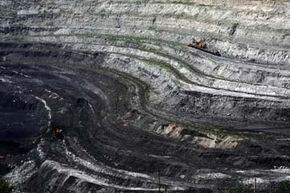Solar electricity isn't the only renewable energy whipping boy out there. Wind power has also taken more than its share of lumps, frequently saddled with a reputation for excessive noise and energy inefficiency. Plus, if some of the rumors are true, wind harvesters of the world have steadily been turning the planet's bird population into an airborne puree of blood and feathers.
To be fair, wind turbines do kill birds -- but so do vehicles, skyscrapers, pollution and the introduction of invasive species into their habitats. Humans have had bird blood on their hands for ages, and as daunting as a field of wind turbines may look, they're responsible for statistically few bird deaths -- less than 1 in every 30,000 [source: U.S. Department of Energy].
But even without the death cries of a thousand birds, aren't wind turbines a noise nuisance? Actually, modern turbine technology renders them relatively silent -- essentially no more than the soft, steady whine of wind through the blades. According to the U.S. Department of Energy, if you stand 750 feet (229 meters) away from a wind farm of multiple turbines, the noise would be no more than that of a working kitchen refrigerator. These aren't helicopter blades, after all. The Ontario Ministry of Environment breaks it down like this: If 0 decibels is the threshold of hearing and 140 is the threshold of pain, then a typical wind farm scores between 35 and 45, sandwiched between a quiet bedroom (35) and a 40-mile-per-hour (64-kilometer-per-hour) car (55).
Finally, there's the issue of cost. Like any energy production facility, there are plenty of upfront costs to harvesting wind energy, but research indicates that the average wind farm pays back the energy used in its manufacture within three to five months of operation [source: BWEA]. Since wind farms depend on variable weather patterns, day-to-day operating costs tend to run higher. Simply put, the wind isn't going to blow at top speed year-round. If it did, a wind turbine would produce its maximum theoretical power. In reality, a turbine only produces 30 percent of this amount, though it produces different levels of electricity 70 to 85 percent of the time [source: BWEA]. This means that wind power requires back-up power from an alternative source, but this is common in energy production.
Wind power demonstrates tremendous promise for the future -- and not just for the environment, but for the pocketbook as well. In 2005, the state of New York determined that a 10 percent addition of wind generation would reduce customer payments by $305 million in one year.





